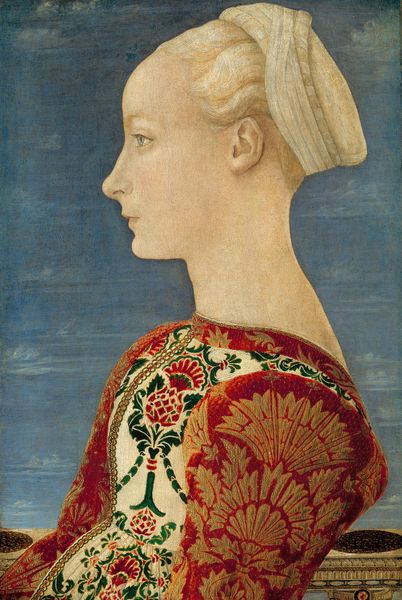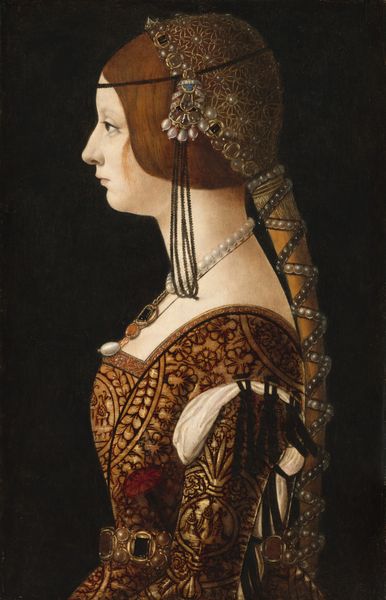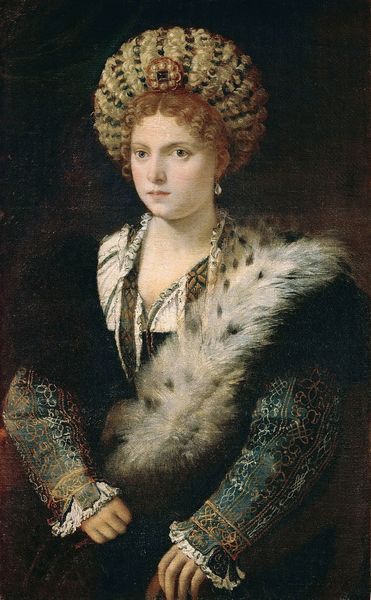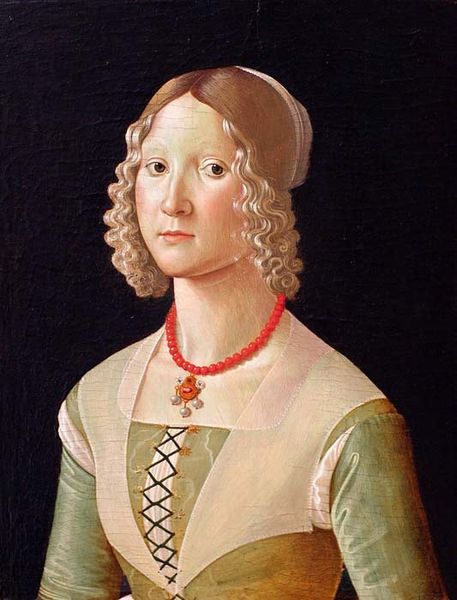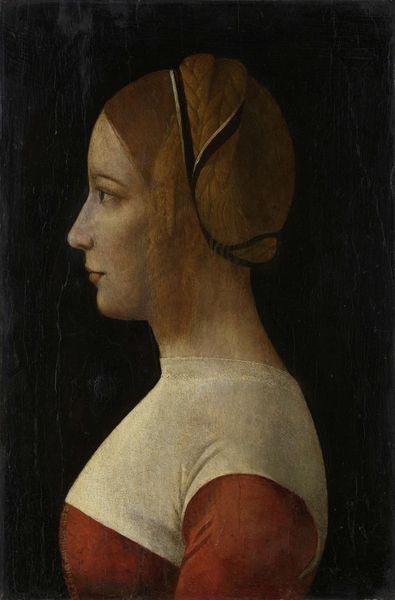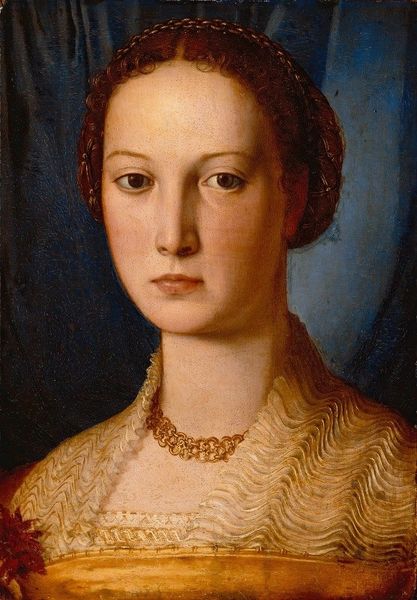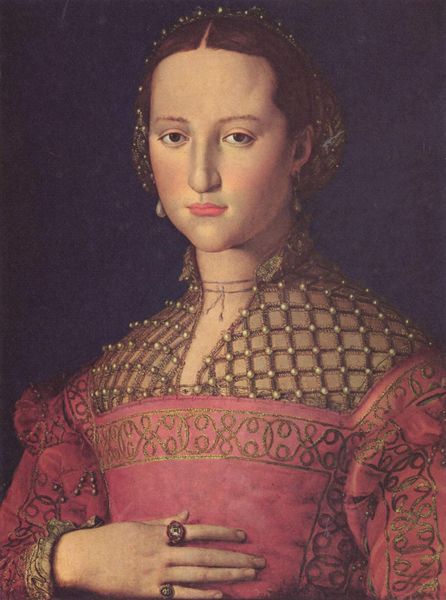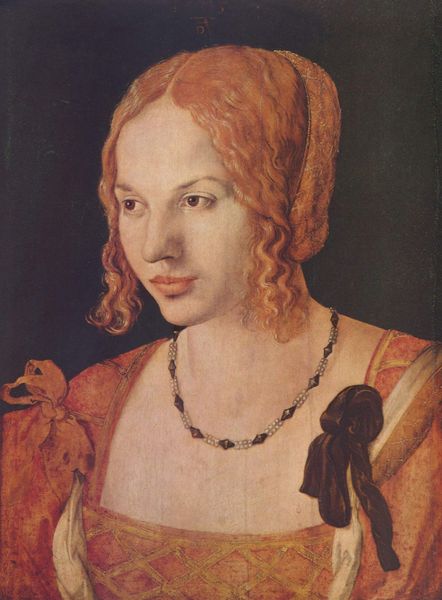
painting, oil-paint
#
portrait
#
painting
#
oil-paint
#
oil painting
#
italian-renaissance
#
early-renaissance
Dimensions: 55 x 34 cm
Copyright: Public domain
Curator: Welcome. We're standing before Antonio del Pollaiolo’s "Portrait of a Woman," circa 1475. It’s currently housed in the Uffizi Gallery, Florence. Editor: It has a certain iciness to it, doesn't it? The cool blues, her poised stillness. And that incredible detail on the garment – a testament to artisanal skill and wealth, surely. Curator: Precisely. Look at the composition; it's a classic Renaissance profile, utterly self-contained. The geometry of her face—the curve of her brow, the sharp angle of her nose—is almost mathematically perfect. And notice how her gaze is directed just beyond us, suggesting intellectual distance. Editor: Yet what strikes me most is the opulence. Observe the fabrics; a deep burgundy velvet against the intricacy of that gold-threaded brocade. The materials speak volumes about social class and the patronage system. Who crafted these materials, how were they sourced, and how was that labor valued in its time? Curator: The materials and the labor are significant but equally compelling is Pollaiuolo’s mastery of line. Notice how a delicate contour defines her features, and creates the impression of depth even in such a flattened view. His skill, a testament to human creativity. Editor: And isn't that creativity, at least partially, linked to the availability and cost of such luxurious materials? We are discussing the artistry, yes, but the availability of specific pigments and gold thread defined, even in its time, the level of artistic execution that was displayed, correct? Curator: Indeed. Still, one must recognize how this artwork signifies more than material wealth and the conditions of making; there is the subject's inner life hinted at, though it’s restrained through pose and line. It invites us to speculate what it means. Editor: True. But reflecting on the materials – the craft that went into clothing, jewelry, even preparing the oils and canvas, grants her presence weight and context it otherwise lacks. Curator: It does ground it, doesn’t it? Thank you for these points. Editor: And thank you. Both perspectives I think help provide a sense of completion when taking in a work like this one.
Comments
No comments
Be the first to comment and join the conversation on the ultimate creative platform.
